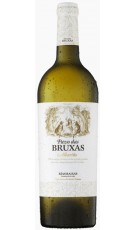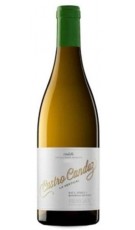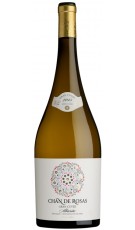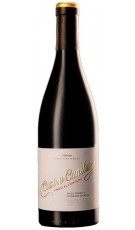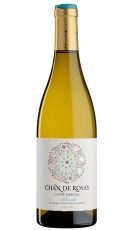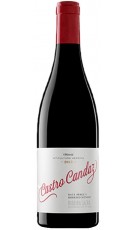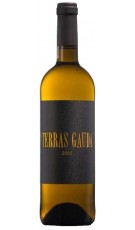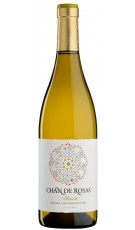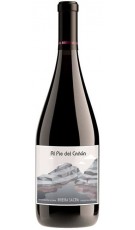
Galicia There are 215 products.
En el siglo XIV, Galicia exportaba esquejes a otros viñedos europeos. En el siglo XIX, toda la región sufrió una economía deprimida y muchos viñedos se abandonaron por la despoblación al emigrar los trabajadores. Los trabajadores de la vendimia gallega fu...
Catalog
-
Castro Candaz La Vertical 2020
White WineRAÚL PÉREZ VITICULTORRibeira SacraThis wine was born from the joint project between Raúl Pérez and the winemaker Rodrigo Méndez in the Ribeira Sacra sub-area of Lugo, using native grapes, resulting in wines...
Reduced price! -
Chan de Rosas Gran Cuvée...
White Wine CrianzaCHAN DE ROSASRías BaixasWhite Wine Crianza, aged in french oak barrels with its less
Reduced price! -
Castro Candaz Finca El...
Red Wine CrianzaRAÚL PÉREZ VITICULTORRibeira SacraThis wine was born from the joint project between Raúl Pérez and the winemaker Rodrigo Méndez in the Ribeira Sacra sub-area of Lugo, using native grapes, resulting in wines...
Reduced price! -
Chan de Rosas Cuvée...
White Wine CrianzaCHAN DE ROSASRías BaixasWhite wine DO Rías Baixas.
Reduced price!In stock -
Castro Candaz Mencía 2021
Red Wine CrianzaRAÚL PÉREZ VITICULTORRibeira SacraThis wine was born from the joint project between Raúl Pérez and the winemaker Rodrigo Méndez in the Ribeira Sacra sub-area of Lugo, using native grapes, resulting in wines...
Reduced price! -
Viña Somoza VIA XVIII 2022
Red Wine.VIÑA SOMOZA, BODEGAS Y VIÑEDOSValdeorrasRed wine made from Mencía (60%), Garnacha tintorera (25%), Mouratón (7%), Albarello (3%), clay soil with black and red slate, sand and gneiss, and alluvial soil. 12 months in 400 and...
Reduced price! -
Terras Gauda Etiqueta Negra...
White Wine.BODEGAS TERRAS GAUDARías BaixasTerras Gauda Black Label, a wine that fills the mouth with its great structure and power. It is unctuous, enveloping and elegant as well as fresh thanks to its excellent fruity acidity.
Reduced price! -
Castro Candaz A Boca do...
Red Wine CrianzaRAÚL PÉREZ VITICULTORRibeira SacraThis wine was born from the joint project between Raúl Pérez and the winemaker Rodrigo Méndez in the Ribeira Sacra sub-area of Lugo, using native grapes, resulting in wines...
Reduced price! -
Viña Somoza Alma do Vello...
Red Wine.VIÑA SOMOZA, BODEGAS Y VIÑEDOSValdeorrasRed wine made from 100% Albarello (Brancellao), alluvial soil, with good drainage, at 550 m altitude, east-southeast exposure. 12 months in 400 and 500 l barrels without batonnage.
Reduced price! -
Ronsel do Sil, Al Pie del...
Red Wine.RONSEL DO SILRibeira SacraAl Pie del Cañón is a wine made with red caíño from two small vineyards located in the Cañón del Sil, which gives its name to the label's brand. Marked...
Reduced price!Preguntar disponibilidad
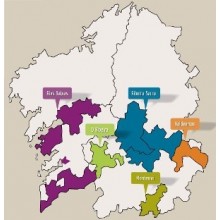
En el siglo XIV, Galicia exportaba esquejes a otros viñedos europeos. En el siglo XIX, toda la región sufrió una economía deprimida y muchos viñedos se abandonaron por la despoblación al emigrar los trabajadores. Los trabajadores de la vendimia gallega fueron en parte los que contribuyeron con su labor a desarrollar los viñedos en bancales de la región del vino de Oporto del Duero. Cuando España entró a formar parte de la Unión Europea en 1985, comenzaron a llegar fondos a Galicia que ayudaron al resurgimiento de la industria vitivinícola.

(+34) 91 129 11 11
(+34) 638 458 218
- Brandy
- Cognac
- Gin Premium
- Ron
- Whisky
- Denomination of Origin
- Winery



















